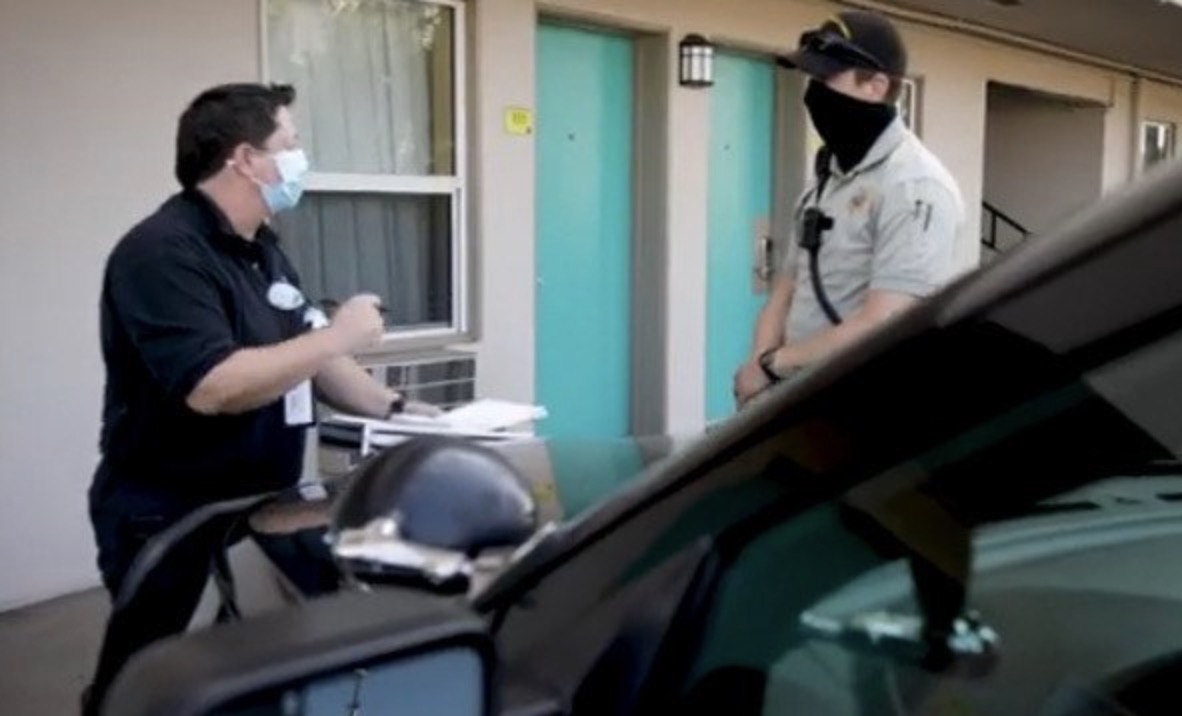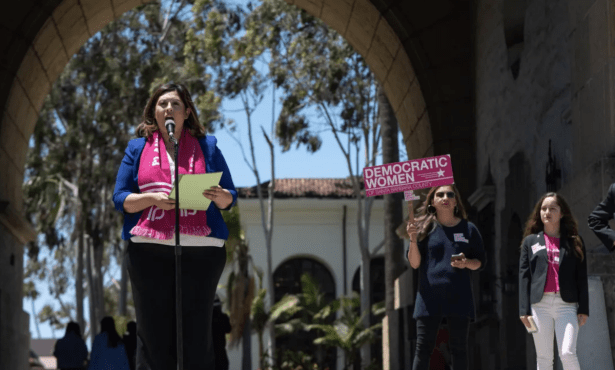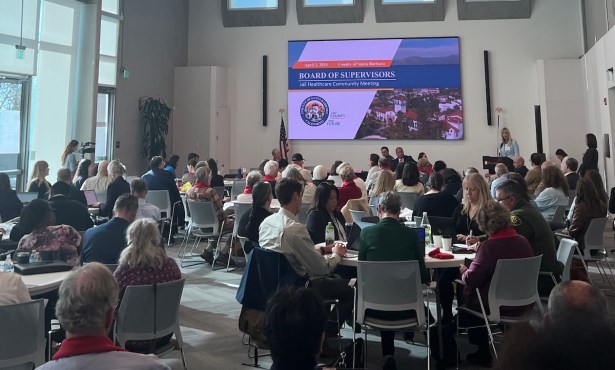Santa Barbara Supes Give High Praise to Mental Health Program
The Experimental Co-Response Teams Save Time and Money but Get No Funding

What started out a few years ago as an unfunded experimental program designed to minimize violent flashpoints between those experiencing mental-health crises and Santa Barbara Sheriff’s deputies responding to these challenging calls has now flowered into a full-fledged program with three full-time teams — dubbed “co-response units.”
This Tuesday, that program — and its bureaucratic guru, Dr. Cherylynn Lee, head of the Sheriff’s Behavioral Sciences Unit — all but got a standing ovation from each of the five county supervisors, who were all clearly moved by the testimony. More striking still was the tear-inducing praise, via Zoom, given by a small but relentless cadre of mental-health advocates better known for their scathing critiques of the county’s various mental-health initiatives.
But despite the piles of statistics attesting to the program’s time-and-money-saving efficacy and the heart-stopping testimonials from affected family members, Dr. Lee would walk away from the supervisors’ chambers without a reliable funding stream.

Co-response teams — specially trained Sheriff’s deputies and mental-health clinicians, who work out of three unmarked SUVs five days a week — are only funded by outside grants. Those grants begin to expire as of October 2022.
In 2020, Sheriff’s dispatchers received 2,984 mental-health crisis calls — twice the number they received the year before. Of those, co-response teams responded to 1,604. In years past, said Chief Deputy Craig Bonner, such calls frequently were resolved by arresting the person, which are massive time-sucks for the deputies. They’d have to wait — often hours — for Department of Behavioral Wellness crisis workers to arrive. As the clock ticked, the subjects often grew more volatile. Thanks to the co-response teams, he said, his deputies are better able to “not use the criminal justice system to temporarily plug gaps.”
According to statistics provided by Dr. Lee, it takes co-response teams an average of 42 minutes to resolve such calls; for deputies responding without a mental-health clinician, it takes 126 minutes. While en route, Lee explained, the teams’ mental-health clinicians can research electronic data systems showing the subjects’ psychiatric histories so that they arrive better prepared.
For people in crisis, a quicker response reduces the threat of escalation. Mental-health clinicians typically enjoy a first-name familiarity with front-line workers at the local emergency rooms, Crisis Stabilization Units, and psychiatric hospitals. In other words, jail is no longer the most obvious option. The numbers seem to bear this out. Of the 1,604 calls for co-response service in 2020, only 11 wound up with a trip to the county jail.
Due to the COVID pandemic, Lee said, in the first six months of 2021, co-response units answered more calls for service — 1,768 — than they did in all of 2020. July was the highest number of mental-health crisis calls in the four years she’s been with the county Sheriff’s Office. The department now fields 36-40 suicidal calls a month; more calls involve a subject with a weapon.
Not mentioned Tuesday was the impact this spike has had on the emergency rooms of local hospitals. They are now overwhelmed with patients, according to mental-health advocates, who may pose an imminent threat to themselves or others. Too often, the 72-hour involuntary holds such cases require expire before the patients can be placed with the appropriate treatment provider.
But this Tuesday, longtime mental-health advocates like Lynne Gibbs, George Kaufmann, and Tom Franklin had high praise for the co-response program. Kaufmann, who has spent the past 23 years lobbying the supervisors for better mental-health options, termed the program “the most successful of any I’ve ever seen.” Parents of mentally ill adult children are no longer afraid to call for help, and there’s a new sense of trust, he said, not just in the law enforcement officers, but in the system as a whole.
Sign up for Indy Today to receive fresh news from Independent.com, in your inbox, every morning.
Tom Franklin, a former County Fire chief, told supervisors how a mentally ill family member had been arrested 11 years ago for a criminal violation stemming directly from his condition. “He was not violent or anything, but he did go to jail.” Franklin recounted how, despite his deep understanding of county bureaucracy, he spent two nights in his car at the jail, waiting for his family member to be released. Franklin began teaching Crisis Intervention Training (CIT) to law enforcement officers and other first responders to help them deescalate potentially dangerous situations.
Lynne Gibbs, chief spokesperson for NAMI, a mental-health advocacy group, recounted how, when her mentally ill adult daughter had entered into someone else’s home through a broken window, the co-response team was able to take her daughter to the county’s Psychiatric Holding Facility instead of jail, where she was ultimately released to a treatment facility.
Leonard Marcus took time off work so he could tell supervisors how his adult son’s struggles with mental illness had resulted in Sheriff’s deputies called to his Goleta home several times. The first time, he said, “was not a pretty sight.” Since the program has begun, he said, the change has been dramatic. “The situation is so much better than I could have dreamed,” he said. His son’s struggles, however, remain. “I just wish there was something more we could do for him.”
“This program is a real game changer,” declared Supervisor Joan Hartmann, who had invited Dr. Lee to make the presentation. As supervisor, Hartmann has heard too many stories of constituents’ mentally ill adult children deteriorating while in county custody.
Supervisors Bob Nelson, Gregg Hart, and Das Williams joined in praising the program. Supervisor Steve Lavagnino said that programs like the co-response units affirmed his belief in public service and the role of government.
It was hoped that Dr. Lee’s presentation might lead to new funding streams for when the co-response grants expired. With round-the-clock funding, Dr. Lee suggested, teams could also handle more follow-up visits and initiate help for those worried about someone who is at risk of explosive behavior.
There had been some speculation that the supervisors might tap into the $86 million in federal emergency recovery money — courtesy of the American Rescue Plan Act (ARPA). Earlier on Tuesday, they approved plans to spend nearly $30 million of that money. They also appear poised to earmark $28 million on programs, treatment, and infrastructure to address the issue of homelessness. Mental-health and addiction programs play prominent roles in these efforts.
Given that 54 percent of those contacted by the county’s co-response team report no permanent address and about half report co-occurring addiction issues, the co-response program would appear an obvious and natural fit. But ARPA dollars are apparently not eligible for law enforcement functions. There’s been some talk at the county administration building about other communities who have paired mental-health clinicians with fire department first responders, not law enforcement.
Supervisor Das Williams suggested that Medi-Cal might be able to reimburse the program but was told such visits did not fit the definition of therapeutic treatment. Supervisor Gregg Hart expressed enthusiasm that the great time and cost savings — “cost avoidance” was the term he used — made possible by the co-response initiative could be plowed back into the program, but the chronic staffing shortages at the Sheriff’s Office makes that unlikely.
Dr. Lee told the supervisors she keeps a glittery “magic wand” in her office that she waves to wish for desperately needed things, such as funding to expand three co-response teams to eight. That would give the county co-response service 24 hours a day, seven days a week. But that’s an expensive dream. It costs roughly $150,000 a year for just one trained Sheriff’s deputy and $125,000 for a mental-health clinician to be posted in the field. That’s a lot of accrued “cost avoidance.” It may be time for Dr. Lee to start waving her magic wand.
If you are having thoughts of suicide, call the National Suicide Prevention Lifeline at 1-800-273-8255 (TALK) or text TALK to 741741.
Support the Santa Barbara Independent through a long-term or a single contribution.




You must be logged in to post a comment.